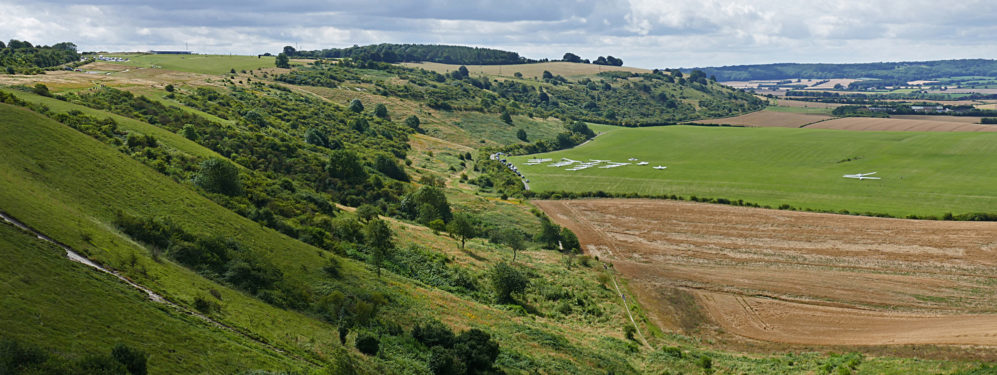#BedfordshireDay is celebrated on 28th November, the birthday of John Bunyan (b. Elstow 1628). In celebration we present a Map of Bedfordshire and our portrait of the county. Check out the Friends of Bedfordshire Society (also on Twitter and Facebook) for more information about Bedfordshire and Bedfordshire Day.
Bedfordshire is an inland county in the south-eastern Midlands of England. The southern end of the county is swept by the chalk ridge of the Chiltern Hills. The rest of the shire is part of the broad drainage basin of the River Great Ouse and its tributaries. Luton and Bedford are the main towns. Outside of these, Bedfordshire is still primarily a rural county with rich agricultural land, rolling rural scenery and pretty villages.
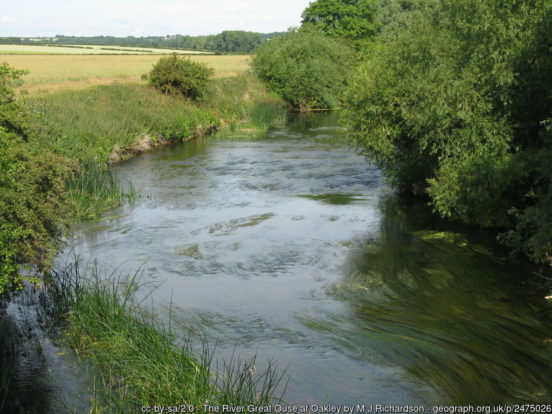
The county’s most famous son, John Bunyan, was born in 1628 in the village of Elstow. Although now effectively a southern suburb of Bedford, the original village survives intact including the 15th-century Moot Hall on the village green. The hall is a remarkable survival – an early Tudor-style timber-framed building, built to provide both a courtroom and a market house. The Abbey Church of St Mary and St Helena is the remains of Elstow Abbey, founded c. 1075 by Judith, Countess of Huntingdon, a niece of William the Conqueror.
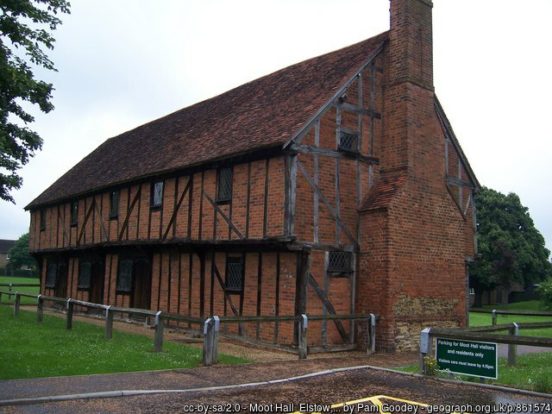
Bedford itself sits in the centre of the shire on the banks of the Great Ouse. Bedford is a major residential and commercial town. The Embankment is the name given to the gardens lining the Great Ouse as it flows through the town centre. Bedford Castle Mound is the remnant of Bedford’s mediæval castle. Bedford Park retains many of its original Victorian features. Bunyan was imprisoned for 12 years in Bedford Gaol, where he wrote The Pilgrim’s Progress. The town of Kempston is adjacent to Bedford and serves to some extent as a commuter town for it.
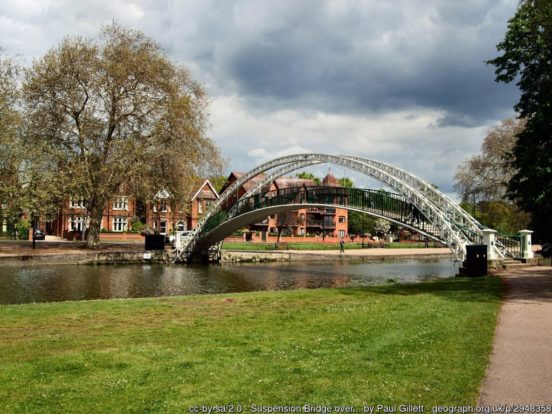
The Cardington Airship Works were founded at Cardington, south-east of Bedford, by Short Brothers during the First World War. The works were nationalised in 1919 and the R101 was developed here. The 2 huge airship sheds still dominate the landscape. At Willington, to the east of Bedford, are the 16th-century Willington Dovecote and Stables.
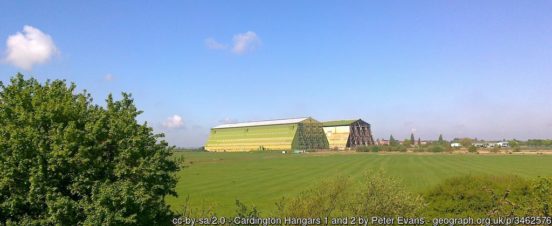
Aside from Bedford itself, the main towns of Bedfordshire lie in its far south. Luton lies in a break in the eastern part of the Chiltern Hills. The town was for many years famous for hat-making. It is still an industrial town with a major airport. Luton Hoo is a famous country house and estate, much used as a film set, to the south of the town. Nearby too is Someries Castle, a 15th-century fortified manor house.
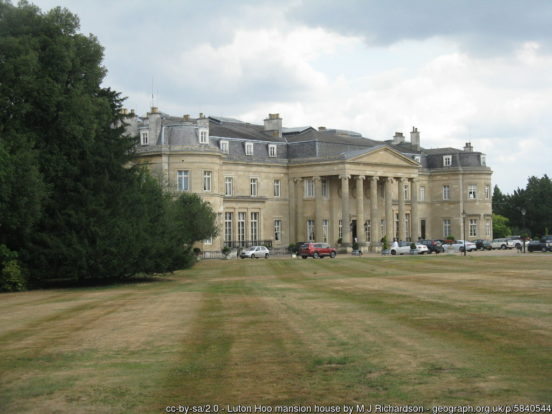
North of Luton is Houghton Regis, a former village which was expanded as a London overspill estate in the 1950s and 1960s. West of Luton is the market town of Dunstable. Dunstable stands where two ancient routes cross: Watling Street and the Icknield Way. The oldest part of the town is along these routes.
South of the town are the Dunstable Downs, a chalk escarpment forming the north-eastern reaches of the Chiltern Hills. They form the county top (797 feet). Whipsnade Zoo has cut an enormous lion shape into the chalk in the side of one of the hills. Whipsnade Tree Cathedral (NT) was planted in the 1930s by Edmond Blyth as an act of “Faith, hope and reconciliation” in response to his memories of the First World War.
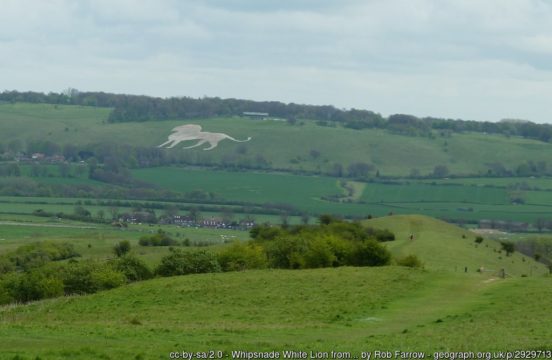
Leighton Buzzard is a traditional market town on the River Ouzel (here the border with Buckinghamshire) at the edge of the Chiltern Hills. Although much developed, the town has managed to retain great charm and character. The Grand Union Canal passes through Leighton Buzzard, its towpaths providing popular walks out into the countryside. The Leighton Buzzard Light Railway is a narrow gauge heritage railway.
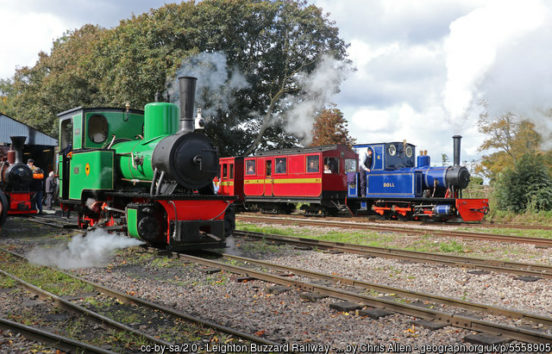
North of these towns, southern Bedfordshire is primarily rural. Woburn Abbey, the seat of the Duke of Bedford, is a grand mansion with historic landscaped gardens, a deer park by Humphry Repton and Woburn Safari Park.
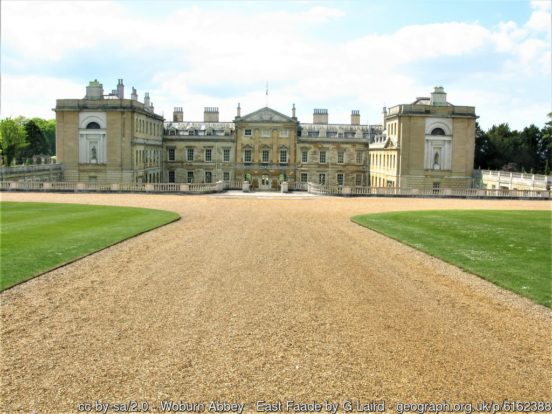
Wrest Park (EH), near Flitton, is the family seat of the de Grey family. It is a 19th-century country house with vast gardens from the early 18th century. The de Grey Mausoleum (EH) in Flitton is one of the largest sepulchral chapels in the country. Houghton House (EH), in the historic market town of Ampthill, was built in 1621 by Mary, Countess of Pembroke. It is said to be the model for House Beautiful in Bunyan’s The Pilgrim’s Progress.
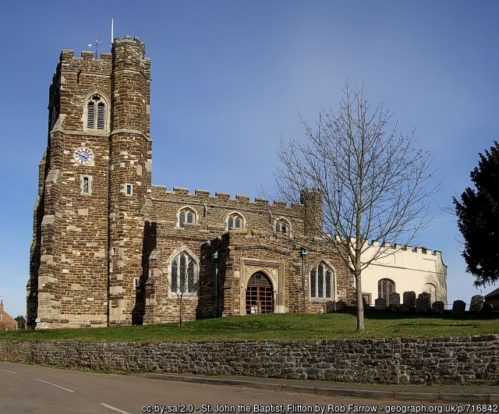
East of Bedford are the market towns of Biggleswade and Sandy. Both lie on the River Ivel. Both lie along the A1 road between London and the North. Sandy is the headquarters of the Royal Society for the Protection of Birds (RSPB). The RSPB’s headquarters, The Lodge (1870), is a neo Elizabethan mansion designed by Henry Clutton for the first Viscount Peel.

North of Bedford, the county is almost entirely rural. The only exception is the far north-east. Here the village of Eaton Socon has been much grown by post-war housing developments. The village lies on the western bank of the Great Ouse, across from St Neots in Huntingdonshire. On Eaton Socon Hill are the remain of Eaton Socon Castle. Bushmead Priory (EH) was established in 1195 as an Augustinian house and, though a ruin, retains mediæval stained glass and wall paintings.
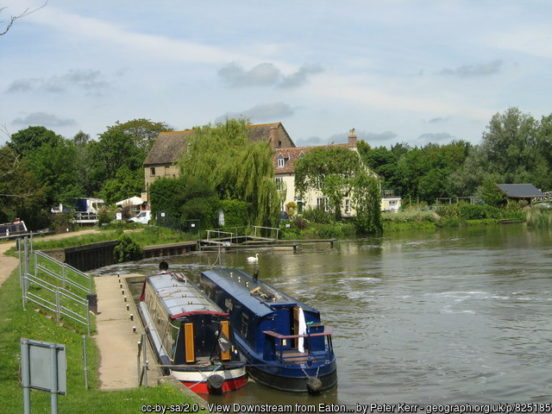
Settlement in what became Bedfordshire is ancient, with Bronze Age settlements known to have existed in the Ouse valley. Roman settlements were concentrated in the south of the later county. Dunstable (Durocobrivae) was an important route centre. After the Roman withdrawal the area was settled by invading Anglo-Saxons and Danes. During the Heptarchy the area formed part of Mercia, becoming part of the Danelaw by the Treaty of Wedmore. The Vikings of Bedford were subdued by Edward the Elder in 915. The first recorded use of the name in 1011 was “Bedanfordscir”. Bedford itself means “Beda’s ford”. The Domesday Survey suggests little resistance to the Conquest, showing an almost complete substitution of Norman for English landholders. During the First Baron’s War, Bedford Castle was seized by Falkes de Breaute, one of the royal partisans. It was the scene of three sieges before being demolished on the king’s order in 1224. During the civil war, Bedfordshire was one of the foremost in opposing the king. From the 16th century to the early 20th century Bedfordshire was one of the main centres of England’s lace industry. Luton was famous for hatmaking and a major centre of motor manufacturing. Bedford became a major centre of brewing and, from the 19th century, an important engineering hub.

The Bedfordshire flag comprises red and gold quarters split horizontally by blue and white waves and vertically with a black band containing three white shells. The red and gold quarters are from the arms of the Beauchamps, the leading family in the county after the Norman Conquest. The waves signify the River Great Ouse, and the shells are from the arms of the Russell Family, commemorating their services to the state and to the county. Bedfordshire day is celebrated on 28th November, the birthday of John Bunyan. The Bedfordshire Clanger and Chocolate Toothpaste Tart, famous county dishes, feature prominently in the celebrations.


